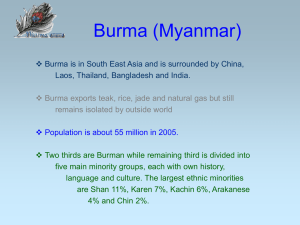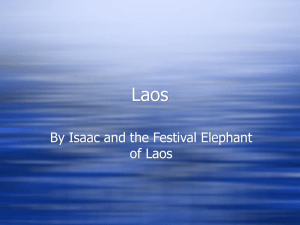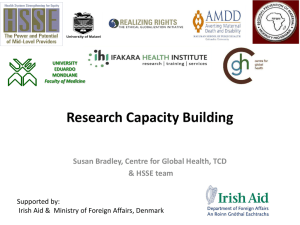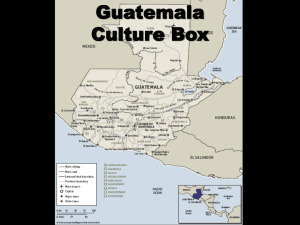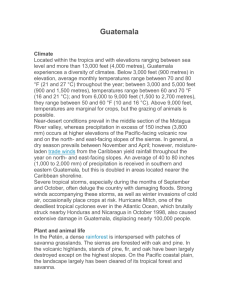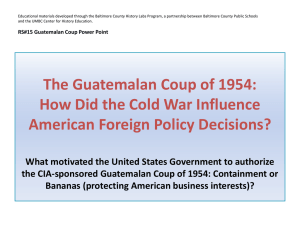Diapositiva 1 - Capacity4Dev
advertisement
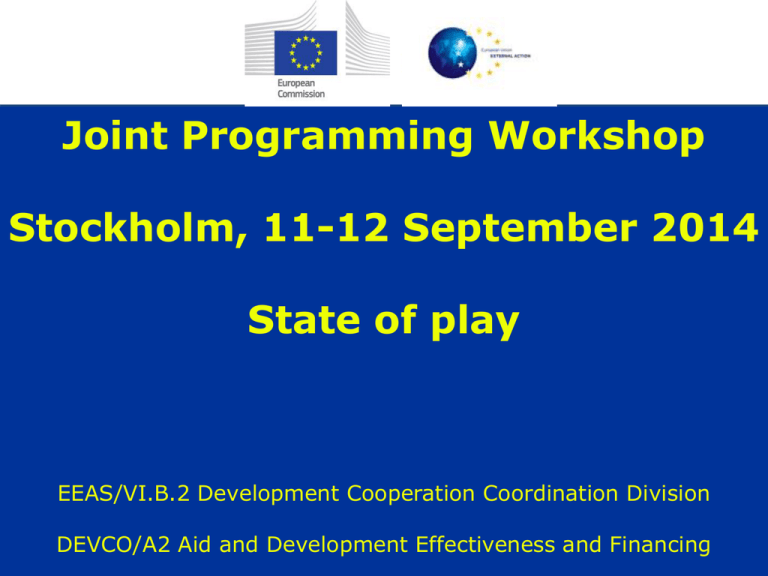
Joint Programming Workshop Stockholm, 11-12 September 2014 State of play EEAS/VI.B.2 Development Cooperation Coordination Division DEVCO/A2 Aid and Development Effectiveness and Financing Joint Programming concept: Single multi-annual country strategy of EU and MS Council Conclusions November 2011 1. Joint analysis of and joint response to partner country’s development strategy 2. Identification of sectors of intervention and in-country division of labour: who is working in which sectors 3. Indicative multi-annual financial allocations per sector and donor Principles: 1. In-country process led by EU Delegations and MS embassies 2. Alignment and synchronisation with partner country planning 3. Gradual approach Joint Programming: why? Response to global realities of increased relevance of non-traditional donors and economic/financial crisis Increased EU political influence, impact and visibility Complying with our aid effectiveness commitments Medium-term cost savings for our partners and for EU and MS Potential in Mozambique (source aid data OECD/DAC 2011) when EU acts as one … How to assess JP feasibility in-country: Heads of Missions reports Key principle: in-country led First Wave in 2012: 11 countries Added value of HoMs reports: enables shared position of EU and MS on the ground (ownership of process) HoMs reports exercise extended in 2013: to another 40+ countries In-country progress (55 potential) • 11 Joint Programming documents agreed: Burma/Myanmar, Cambodia, Chad, Ghana, Guatemala, Laos, Namibia, Rwanda, Senegal, South Sudan, Togo • 3 Joint analysis/response strategies agreed: Bolivia, Ethiopia, Cote d'Ivoire • 5 additional Joint Programming documents by end 2014: Burundi, Comoros, Mali, Paraguay, Kenya • 20 countries expected by 2015-2017 • 16 countries to be further analysed • Quality of documents has improved: – better analysis, increased division of labour, inclusion of indicative allocations, first move towards joint implementation, results frameworks and monitoring 11 advanced countries in financial terms COUNTRY Table Burma/Myanmar EU allocation (M€) Total EU + MS (M€) Period 300 870 2014-2016 (3 years) Cambodia 471 1400 2014-2018 (5 years) Chad 442 582 2014-2020 (7 years) Ghana 319 1500 2014-2016 (3 years) Guatemala 186 500 2014-2020 (7 years) Laos 33 175 2014-2015 (2 years) Namibia 68 166 2014-2016 (3 years) Rwanda 541 1473 2014-2017/18 (5 years) Senegal 200 1200 2014-2017 (4 years) South Sudan 345 920 2011-2013 (3 years) Togo 216 483 2014-2020 (7 years) Total 3121 9269 Regional breakdown Dark green = Joint programming agreed Middle dark = Potential, but not agreed yet Light green = No Joint Programming at this stage 12 10 8 6 4 2 0 Country type breakdown 35 30 25 20 15 29 10 18 5 8 0 Fragile States (OECD + World Bank list) LDC/LICs MICs Guiding principles for EU programming synchronisation In several countries synchronisation will take place Still remains challenge in others: ex. Uganda Uganda 2011 2012 2013 2014 2015 2016 2017 NDP EU BE ? DE ? DK ? IR IT ? ? ? ? ? NL SE UK ? Windows for synchronisation/JP per year 2013/2014 Bangladesh 2015 Comoros 2016 2017 2018 Date to be confirmed Afghanistan Bolivia phase 2 Cambodia phase 2 Algeria Bolivia Bangladesh phase 2 Georgia Honduras Mali phase 2 Burma/Myanmar phase 1 Benin Ghana phase 2 Kenya phase 2 Moldova Burundi Burkina Faso Guatemala phase 2 Liberia phase 2 oPt Cambodia Burma/ Myanmar phase 2 Haiti phase 3 Nicaragua Timor Leste Chad Burundi phase 2 Nepal Paraguay phase 2 Côte d'Ivoire Chad phase 2 Philippines Rwanda phase 2 Egypt Côte d'Ivoire phase 2 Senegal phase 2 Ethiopia Egypt phase 2 Sierra Leone Ghana El Salvador South Sudan phase 3 Guatemala Ethiopia phase 2 Togo phase 2 Haiti phase 2 Laos phase 2 Kenya Malawi Laos Mauritania Liberia Morocco Mali Mozambique Namibia Niger phase 2 Paraguay Pakistan Rwanda Tanzania Senegal Tunisia South Sudan phase 2 Uganda Togo Niger phase 1 Vietnam Yemen Zimbabwe Stakeholders In most JP countries all active MS join JP JP seen as more challenging in donor-crowded countries Other European donors Switzerland and Norway participate in a number of countries Partner countries generally supportive, but not pro-active: to be involved from the beginning as far as possible From Joint Programming towards joint implementation Council conclusions Nov. 2011: 'Joint programming does therefore not encompass bilateral implementation plans. It allows the EU and the Member States to substitute their individual country strategies.' However, joint implementation is logical next step: EDF Regulation: 'and where appropriate joint results framework' 'joint donor-wide missions and by the use of co-financing and delegated cooperation arrangements' 'where appropriate, seek to undertake joint evaluations with EU Member States, other donors and development partners' Joint Programming strategically paves the ground for joint implementation, once division of labour has been decided EU+MS expressed an interest: Joint Programming workshops in Guatemala and Addis Ababa called for move towards joint implementation Joint implementation: possible approaches Division of labour within sectors: sector mapping; who does what (best), donor roles (lead, active); managing exits; indicative allocations Use toolkit on Division of Labour (June 2009) From sector coordination towards: joint analysis/appraisals and sector response; joint aid modalities (budget support, pooled funding, delegated cooperation, trust funds); sector dialogue; work with non-EU donors Joint sector results frameworks: joint goals/indicators built on partner country systems; joint monitoring, evaluation and reporting; ensure EU-visibility Joint reporting on global funds: Global Partnership for Education The way forward 1. Focus on actual implementation by EU and MS; from Mexico Communique: • • Promoting the extension of joint programming processes to more partner countries and other development partners to make full use of its potential, with a view to having joint programming processes operational in 40 or more partner countries by 2017; EU guidance issued by the end of 2014 and regional seminars on joint programming held in five regions by mid-2015. 2. Keep political momentum in EU and MS at Council, EU Directors General, Technical Seminars, Regional Workshops Regional Joint Programming workshops Objectives: update from HQ; guidance; exchange experiences; address local challenges; identify good practice and support needed Target group: EU Delegations and MS embassies (HoCs); also participation of EEAS, Commission and MS HQs Organisation: EEAS & Commission Joint Programming & geographical teams with hosting EU Delegations + MS Planning: Latin America, Guatemala, 20-21 January 2014 (support: Spain) Central, East & Southern Africa, Ethiopia, 13-14 March 2014 (support: Belgium and the Netherlands) West Africa, Ivory Coast, 4-5 June 2014 (support: France) Asia, Myanmar/Burma, February/March 2015 (support: Germany) Neighbourhood, venue, date and support TBD
